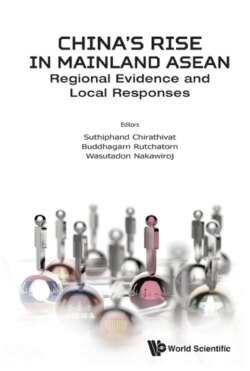Читать книгу China's Rise in Mainland ASEAN - Группа авторов - Страница 28
На сайте Литреса книга снята с продажи.
3.1.Introduction
ОглавлениеThe Mekong sub-region has been an important strategic area in Southeast Asia. The Mekong River is located in the middle of the Mekong sub-region. It flows through the southern part of China (Yunnan Province) and the five Mainland ASEAN countries, Thailand, Cambodia, Laos, Myanmar, and Vietnam — all the Mainland ASEAN countries mentioned in this chapter. Since the end of World War II, the Mekong sub-region has been an important strategic area in both the economic and political development of the surrounding countries. The region has also attracted massive interest from powerful, distant countries like the USA and Japan. Overall, many countries around the world consider the Mekong sub-region to be an area full of economic opportunity; thus, the Mekong sub-region has brought increasing influence and power to Southeast Asia. However, apart from geopolitical factors, the increasing influence and power of this region has also entangled the sub-region in numerous problems and conflicts. These increasing problems and conflicts include a conflict of interest over the allocation of water resources, various economic conflicts among the countries, and the common ground on environmental issues. Large development projects have been planned and implemented to support the economic growth of the countries involved and to improve the lives of the people in the area. However, there has also been criticism of the projects, leading to tensions and disputes between the countries involved.
Since the early 1950s, many cooperation frameworks have been established to manage and solve these problems in the sub-region, such as the Mekong River Commission (MRC), the Greater Mekong Sub-Regional Economic Cooperation Program (GMS), the Lower Mekong Initiative (LMI), and, the latest one, the Lancang–Mekong Cooperation (LMC). Since the first Summit meeting in 2016, the LMC has launched several cooperation projects promoting development in these sub-regional countries, representing the importance of the Mekong River sub-regional framework. At the same time, the role of China in this framework and the roles of the sub-regional countries themselves have also grown. Although LMC plays a significant role in the development of the Mekong sub-region and further advancement in China–ASEAN cooperation, complementarity and mutual relations, there are some inner challenges. There are disagreements as to whether the cooperation mechanism is a practical framework suitable to Mekong sub-regional development and in her best interests, eliminating core problems and conflicts in the region, or whether the cooperation itself brings more harm than good. There have been concerns about the influence of China on the Mekong sub-region and whether the Mekong sub-regional countries rely too much on that country.
This chapter is divided into four parts. The first part explains the establishment of the LMC with a background of the Mekong sub-regional cooperation history. The second part examines the opportunities given to the Mekong sub-regional countries of the LMC. The third part explores the challenges and risks of the LMC in the Mekong sub-region. In the last part, the chapter concludes with an analysis and recommendation of a solution for helping the LMC to promote common ground and in-depth development of the Mekong sub-region.
